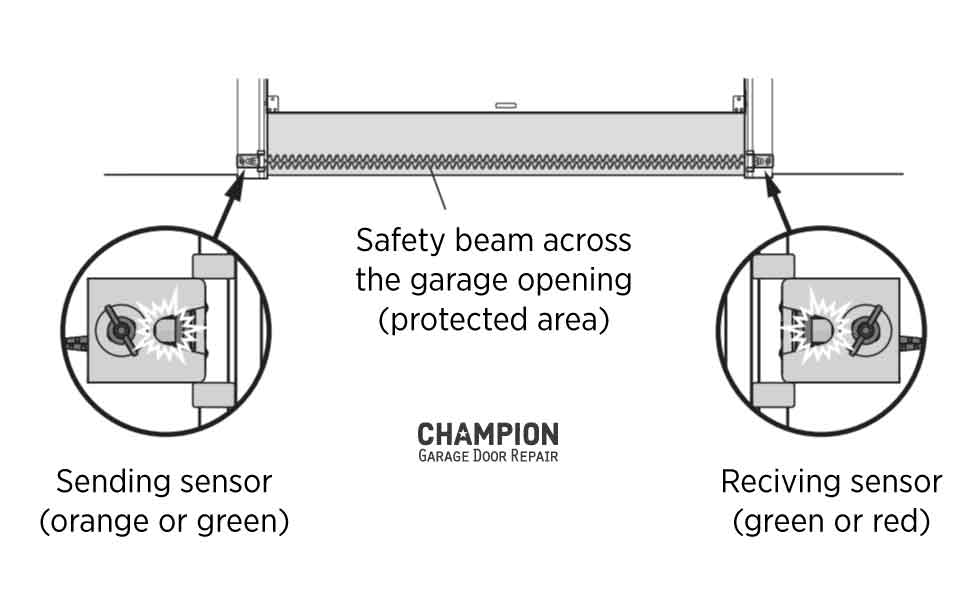When your garage door doesn’t close, it’s not only a frustrating experience but also a security risk. The quick fixes below can help you get your garage door closing again, secure your property, and avoid the expense of hiring a garage door repair service. Here are seven easy solutions for when your garage door suddenly won’t close:
1. Check the Power Supply
First, ensure that the garage door opener is plugged in and the outlet is receiving power. If the outlet doesn’t work, check the circuit breaker or fuse box to see if the circuit has been tripped. Otherwise, plug the opener into a different outlet until the malfunctioning outlet is fixed.
2. Perform a Visual Inspection
Inspect the garage door and tracks to see if there’s an obvious sign of breakage such as misplaced rollers, cables, broken hinges, springs, or buckling door sections. Loose screws on the door’s tracks can also prevent the door from closing, as well as belongings that are caught in the doorway such as boxes or golf clubs.
3. Check the Garage Door Sensors
Obstructed or misaligned garage door sensors are the most common cause of a garage door not closing. The sensors are located at the bottom ends of the garage door opening. Each sensor should have an LED light. When properly aligned, both lights should be on and solid. If the receiving sensor’s light is off or flashing, the sensors may be misaligned or malfunctioning.
Make sure the sensors are clean and free from any debris or obstructions that could prevent them from functioning properly. Align the sensors by adjusting them until they face each other.

Ensure the sensor connections are clean and secure, and check that the opener’s terminals are in good condition and free of corrosion. If the sensors are properly aligned but the LED light is still flashing or won’t turn on, inspect for a short or broken wire. Proceed with more advanced sensor troubleshooting if necessary.
4. Try Both the Hardwired Wall Button and Remote Control
In some cases, either the wall button or the remote control may be malfunctioning. If the door won’t close when using the remote control, try using the hardwired wall console instead. This will help pinpoint the source of the issue.
For example, frequency interference could disrupt the remote’s signal, while a broken or loose electrical wire might cause issues with the hardwired wall button.
5. Inspect Your Garage Door Opener
Inspect the mechanisms of your garage door opener. Check the rail assembly, belt, or chain for any visible damage. Next, inspect the opener sprocket. Remove the motor cover and ensure all wire harnesses are securely connected.
6. Look for an Error Code
Modern electric garage doors often have a troubleshooting LED that can help identify the problem. Read the error code from the opener and refer to the owner’s manual for diagnosis.
7. Release the Door to Manual
If there’s an electrical problem, operating the door manually can help secure your garage and property until the issue is resolved or a garage door repair technician arrives.
Only after ensuring that the springs aren’t broken, release the door from the opener using the emergency release cord, and slowly close the door. If the door is stuck open and won’t close manually, the issue is likely a mechanical failure related to the door itself.
What to Do Next
If none of the solutions above work, you may need to further troubleshoot your garage door or consult a licensed garage door repair company. Remember that a garage door is a torque-driven heavy object, and attempting to repair it yourself can be challenging and sometimes dangerous without proper knowledge and tools.







